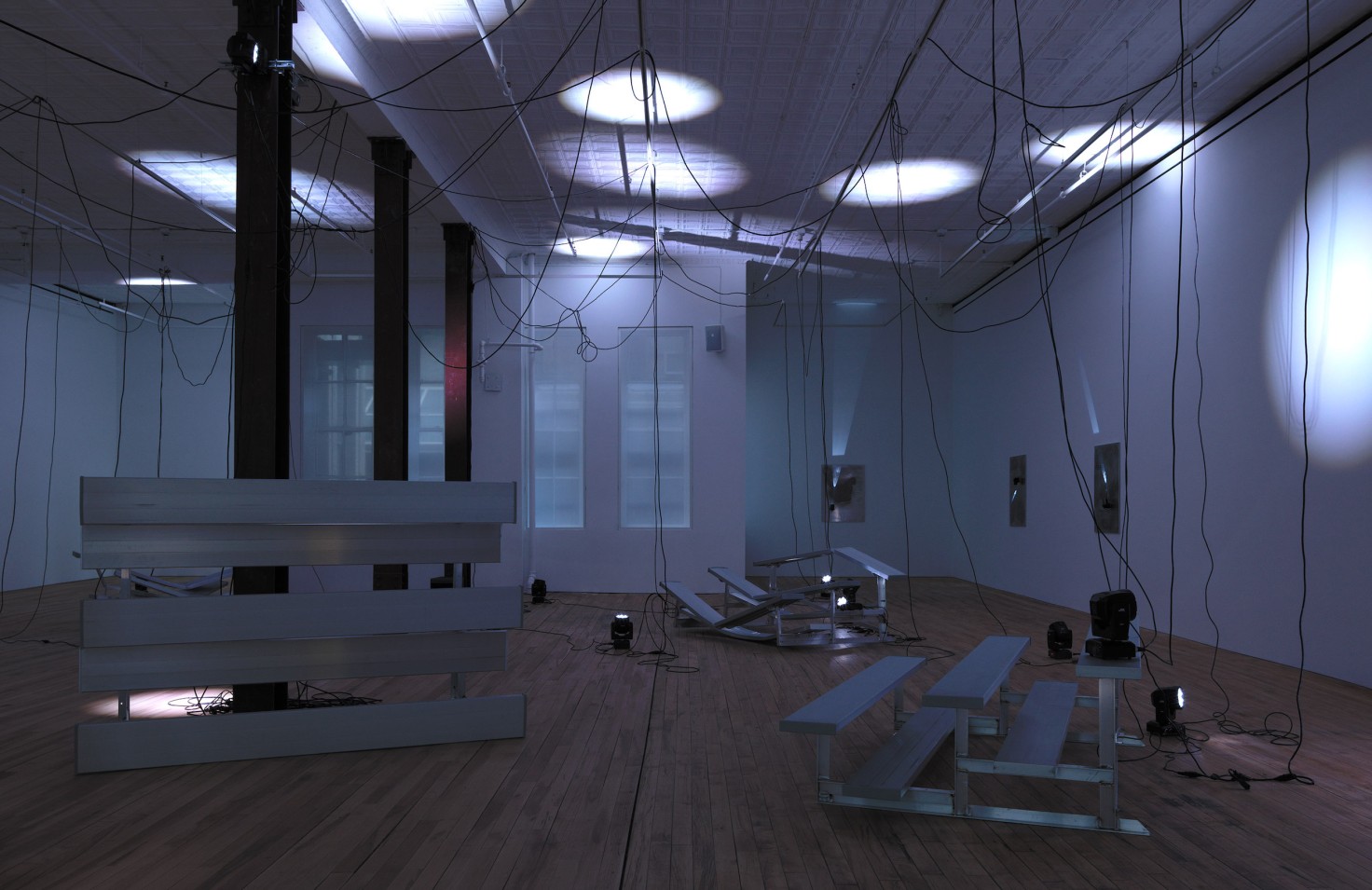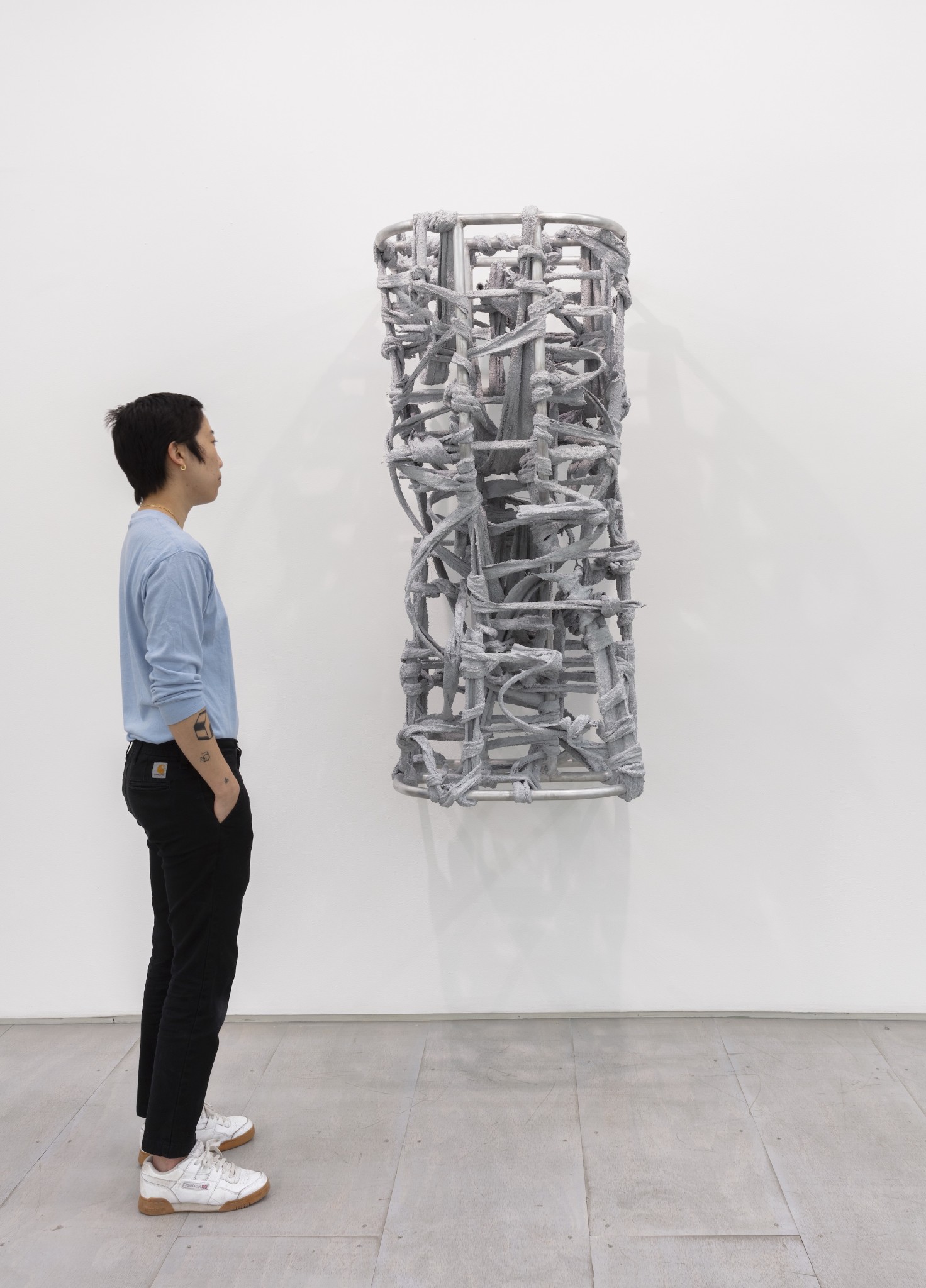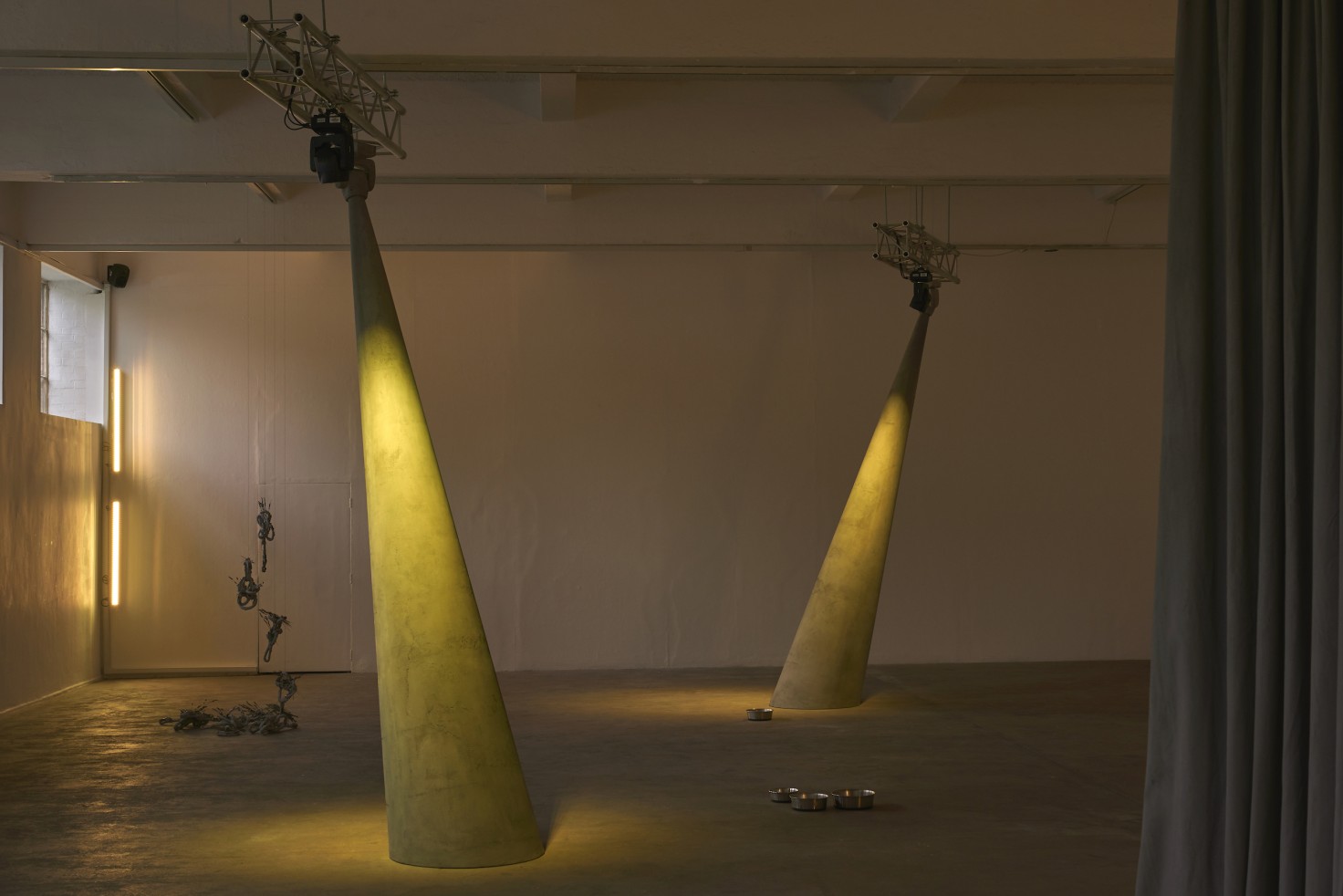The LA-based performance and installation artist has become known for weaving together whispers, screams, political speeches, the music of Tamia and Tina Turner, and even the sounds of cats and dogs in an expansive art practice that takes its inspiration from the dazzling spectacle of commercial live music performance. Rupturing spectacle, Gale’s work lies in breaking things down into their constitutive parts, retaining some recognizable elements of performative experience and eschewing others in favor of something uncanny, yet familiar.
Take Gale’s performance, AUDIENCING, which debuted at MoMA PS1 in February 2020. It inverted nearly every preconceived notion of what constitutes live music performance: the audience became the focus as everyone sat facing each other in a circle of chairs. Instead of a performer, a sound system played a program of bent and amplified pop sounds. Searing stage lights careened around the room underneath the vaulted metal armature of a large commercially-produced stage, creating an atmosphere that blended elements both familiar and strange. According to Gale, each performance felt different depending on who was there and being in the room transformed into something more than spectatorship. As the artist wielded sound, light, duration, and intensity to craft a scenario ripe for a rapid, continuous exchange between attention, performativity, power, and control, viewers became active “audiencers.” For in Gale’s sonic universe, you’re just as likely to find yourself underneath, within, or as part of a stage as in front of one.
Next month, Gale will continue the work of creating carefully-crafted spectacle with OTHER SEASONS, the artist’s first live performance featuring musicians, set to debut on November 4 at the 2023 Performa Biennial in New York City. In it, Gale will play with noise and silence, distance and closeness, describing the commission as one that will “manipulat[e] the audience’s felt experience of space using volume.”



